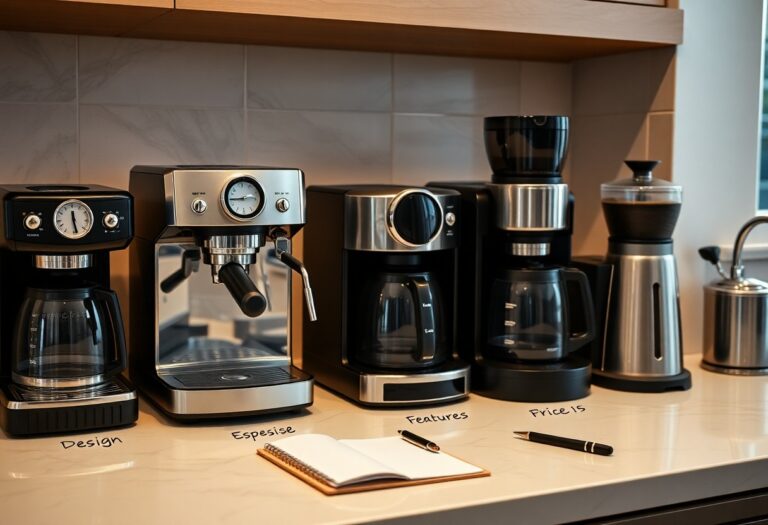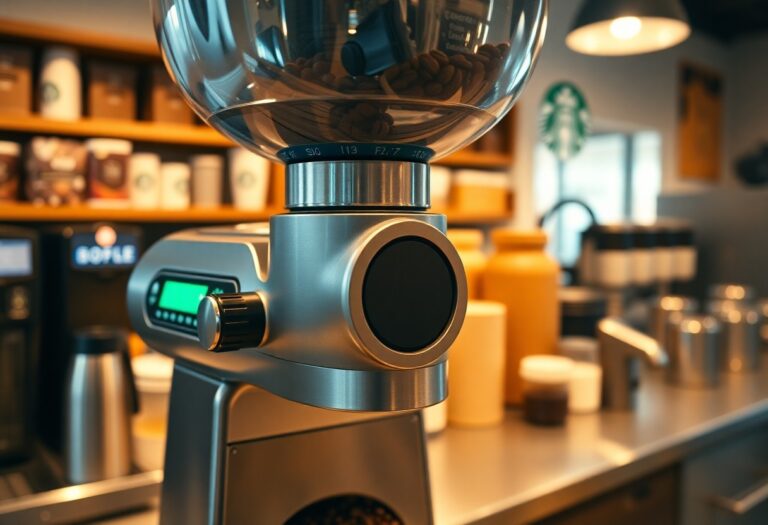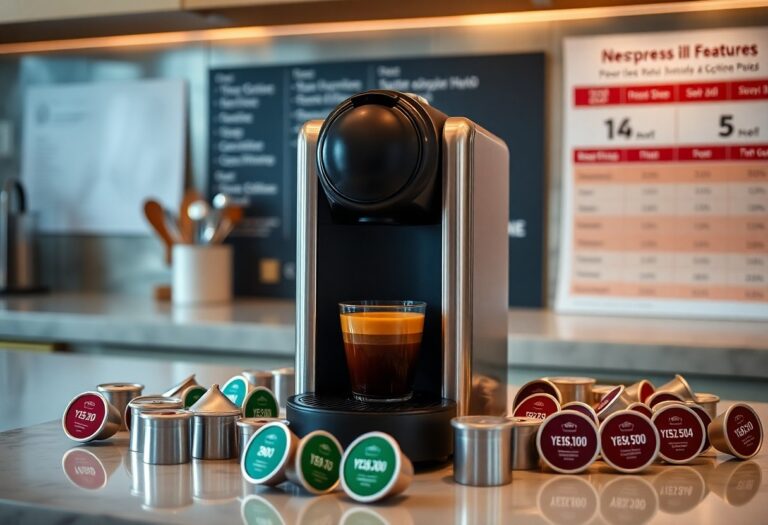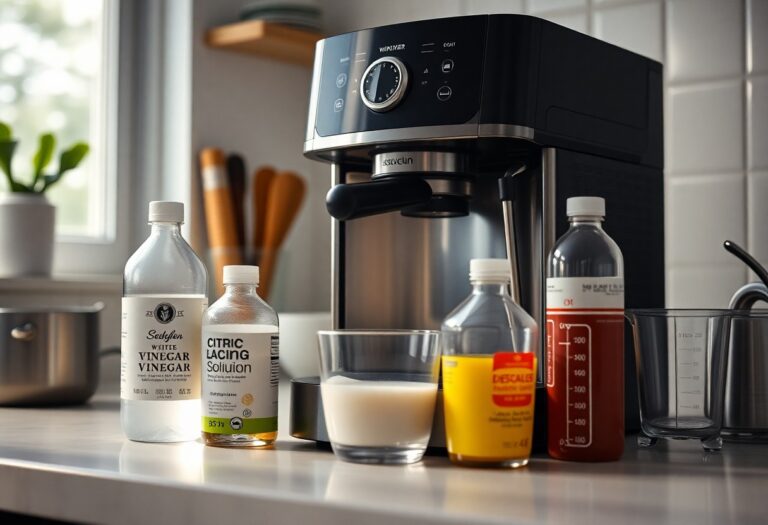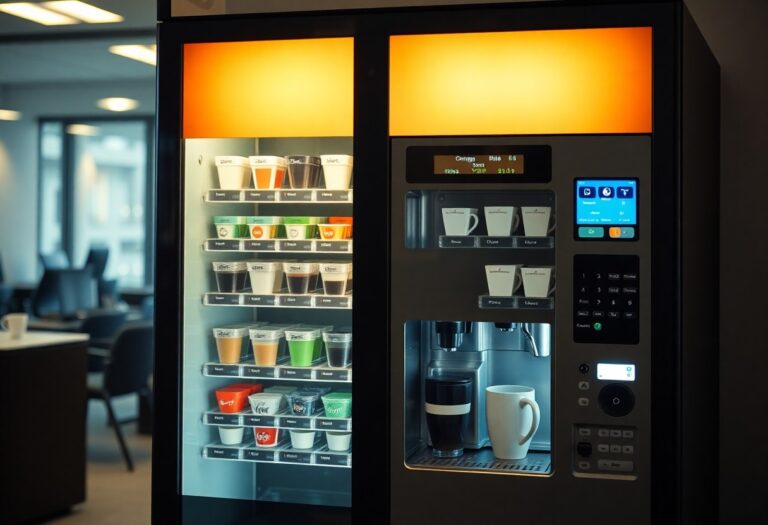What Coffee Beans to Use in an Espresso Machine – Bean Selection
Espresso is not just a drink; it’s a fine art that begins with the right selection of coffee beans. To achieve that rich, bold flavor your palate craves, you’ll want to choose beans that are freshly roasted and finely ground. Opt for a medium to dark roast for optimal extraction and flavor depth. Pay attention to origin and blend as these factors influence acidity and taste profile, helping you craft the perfect espresso shot. By selecting the right beans, you elevate your coffee experience to new heights.

Key Takeaways:
- Select beans that are specifically labeled for espresso to ensure optimal flavor and aroma.
- Medium to dark roast beans often produce richer flavors and a better crema for espresso drinks.
- Single-origin beans can provide unique taste profiles, while blends offer a balanced flavor experience.
- Freshness is important; look for freshly roasted beans and consider purchasing in smaller quantities.
- Experiment with different origins and roast levels to find your personal preference for espresso.

The Bean Basics: Understanding Coffee Composition
Every espresso starts with the foundation of its beans, which consist of vital elements like flavor compounds, acidity, sweetness, and body. The unique combination of these characteristics shapes your espresso experience, making it vital to choose your beans wisely. With thousands of varietals available, understanding the general composition of coffee beans can help you select those that will deliver the espresso flavor profile you desire.
Arabica vs. Robusta: The Flavor Profiles
Arabica and Robusta beans differ significantly in flavor; Arabica boasts a smoother, more complex taste often described as fruity or floral with higher acidity, while Robusta provides a bolder, earthier profile with a nutty or chocolatey taste and increased bitterness. If you enjoy a rich and smooth espresso, Arabica might be your go-to, whereas Robusta can enhance the crema and add intensity.
Specialty Grades and Their Impact on Espresso Quality
Specialty grades are categorized based on specific quality standards defined by the Specialty Coffee Association (SCA) and can significantly influence the quality of your espresso. Beans are scored on a 100-point scale, with those receiving 80 points or higher recognized as specialty. Higher grades often indicate improved flavor clarity and complexity, attributing to more careful cultivation, processing, and sourcing. These beans can offer unique tasting notes and a more refined overall espresso experience.
Specialty grade beans typically come from specific regions and are subject to rigorous quality control processes, which means you are likely to notice a significant difference when using them in your espresso machine. For example, single-origin specialty beans from Ethiopia are often celebrated for their floral and fruity notes, while beans from Colombia may offer a balanced profile with caramel undertones. This elevated attention to detail not only enhances the flavor but also ensures that your espresso exudes distinct characteristics that can elevate your brewing journey.
Roast Levels: Finding Your Flavor
The roast level of coffee beans plays a vital role in determining the flavor profile of your espresso. Dark, medium, and light roasts all offer unique taste experiences and varying intensity, inviting you to explore a spectrum that suits your palate. Dark roasts deliver bold, robust flavors with lower acidity, while medium and light roasts unveil a more nuanced taste with brighter acidity and intricate sweet notes. Selecting the right roast can elevate your espresso from good to exceptional.
The Dark Side of Espresso: Benefits of Dark Roasts
Dark roasts are often favored for their deep, rich flavors and full-bodied profiles. With notes of chocolate, caramel, and toasted nuts, they provide a comforting experience that many espresso lovers cherish. Additionally, dark roasts generally contain less caffeine as some gets burned off during the roasting process, making them a popular choice for those who prefer a bolder taste without excessive stimulation.
Exploring Medium and Light Roasts for Unique Espressos
Medium and light roasts unveil intriguing layers of flavor that can transform your espresso experience. While dark roasts lean toward comforting cocoa and nutty notes, medium roasts strike a balance with subtle sweetness and well-rounded acidity, perfect for those looking to savor a more complex cup. Light roasts, on the other hand, accentuate fruity and floral nuances, providing a crisp and vibrant sip that can highlight the coffee’s origin. By experimenting with these roast levels, you can discover unique flavor profiles that resonate with your taste.
Exploring medium and light roasts invites you to appreciate the delicate signs of origin in your espresso. With light roasts, you might encounter vibrant, fruity, and citrusy notes reminiscent of the coffee’s native growing conditions, often revealing flavors that starkly contrast with the earthier, bolder profiles of darker beans. For instance, a light roast Ethiopian coffee could present notes of jasmine and lemon, while a medium roast might showcase a captivating blend of chocolate and sweet caramel. This exploration tempts your taste buds to break free from traditional dark roast boundaries, expanding your espresso horizon beyond the expected.
The Importance of Freshness: From Farm to Cup
Freshness significantly impacts the quality of your espresso, transcending mere taste to affect aroma, acidity, and body. Beans start losing their natural oils and vibrant flavors within weeks of roasting. To fully enjoy the complexity of your favorite coffee blend, ensuring that beans are not only freshly roasted but also used within a few weeks is necessary. The journey from farm to cup should prioritize this freshness to yield the most flavorful results.
How Roasting Date Affects Flavor
The roasting date directly influences the flavor profile of your beans. Freshly roasted beans boast vibrant and rich flavors, while those past their optimal date may taste stale and lack complexity. Ideally, you should consume your coffee within 2-4 weeks after roasting to savor its intended characteristics. Factors like environmental conditions during transport and storage can also alter the beans’ vitality, making it necessary to stay mindful of this timeline.
The Role of Storage Conditions in Bean Freshness
Storage conditions play a significant role in maintaining the freshness of your coffee beans. Ideal storage involves keeping beans in a cool, dark place, sealed away from moisture and air. Exposure to light, heat, and humidity can accelerate the deterioration of flavors and aromas. Using airtight containers and minimizing exposure to these elements is vital for preserving the quality of your beans long after opening.
Optimal storage is simple yet often overlooked. Consider using opaque containers made of glass or ceramic to protect beans from light, while also sealing them tightly to reduce oxygen exposure. Avoid placing your beans in the fridge or freezer, as temperature fluctuations can introduce moisture and lead to condensation. By creating a stable, dark environment for your coffee, you ensure that every espresso shot maintains a level of freshness that allows the intricate flavors to shine through, enhancing your overall coffee experience.
Sourcing High-Quality Beans: Where and How
Finding quality coffee beans requires discernment and a willingness to explore various sourcing avenues. Look for beans from regions known for their exceptional coffee, such as Ethiopia, Colombia, and Brazil, and prioritize roasters who focus on transparency about their sourcing methods. Visiting local artisan coffee shops or specialty roasters often reveals unique small-batch offerings that showcase the rich flavors of their origin. Consider ordering directly from roasters or bean suppliers who provide detailed tasting notes and growing region information to ensure you’re selecting the best beans for your espresso machine.
Direct Trade vs. Fair Trade: Ethical Considerations
Opting for either Direct Trade or Fair Trade coffee beans can significantly influence your purchase’s ethical impact. Direct Trade often involves direct relationships between farmers and roasters, ensuring that growers receive a higher percentage of the sale price, fostering better quality control and transparency. On the other hand, Fair Trade promotes equitable trading standards and supports sustainable farming practices, benefiting the community at large. Your choice can reflect your values regarding ethical sourcing and sustainability.
The Changing Landscape of Coffee Farming
The coffee farming industry is evolving rapidly due to climate change, market demand, and shifting consumer preferences. Many farmers are adopting *regenerative agricultural practices* to combat environmental challenges while enhancing the quality of their beans. For instance, some are integrating polyculture systems that maintain biodiversity, helping to stabilize yield fluctuations. Additionally, the rise of specialty coffee has led to a focus on micro-lots, allowing farmers to produce unique flavor profiles that cater to discerning palates. These changes are redefining the ways you can access high-quality coffee while encouraging sustainability within the industry.
Experimenting with Blends: Crafting Your Ideal Cup
Creating your perfect espresso often involves experimenting with different blends. Each combination of beans can unveil unique flavors that may surprise your palate. Consider mixing beans from various regions, origins, or roast levels to discover new dimensions in taste. By trying various ratios, you can tailor your espresso to your liking, whether you prefer a rich, chocolatey profile or a bright, fruity note.
The Art of Blending: Customizing Flavor Profiles
Blending beans allows you to customize the flavor profiles of your espresso according to personal preferences. Combining beans with different characteristics, such as acidity, sweetness, and body, can yield a complex shot that captures an array of flavors in each sip. Experiment with single-origin beans first and then gradually incorporate other varieties to create a blend that truly represents your taste.
Notable Espresso Blends to Try at Home
Several espresso blends stand out for their unique flavors and exceptional quality. Consider trying a classic like the Lavazza Super Crema, renowned for its creamy texture and notes of honey and almonds. Another excellent choice is the Illy Classico, which features a balanced profile with hints of chocolate and caramel. For a bolder experience, explore the Stumptown Hair Bender, a blend that boasts fruity undertones and a rich body that pairs beautifully with milk-based drinks.
Exploring notable espresso blends at home offers an exciting journey into flavor discovery. Each blend, like the Counter Culture Big Trouble known for its smooth buttery texture, or the Blue Bottle Three Africas, combines beans from Ethiopia, Uganda, and Rwanda for a vibrant, fruity experience, can dramatically enhance your espresso craft. Trying these blends not only expands your tasting horizons but also equips you with a greater appreciation and understanding of the diverse world of coffee.
Summing up
Presently, when selecting coffee beans for your espresso machine, you should prioritize quality and flavor profiles that match your taste preferences. Whether you lean towards single-origin varieties or blends, it’s important to consider the roast level, acidity, and sweetness that will enhance your espresso experience. For more insights and recommendations, check out the Best Espresso Beans in 2025: My 10 Current Favorites, which can guide you in making the best choice for your brewing needs.
FAQ
Q: What type of coffee beans are best for making espresso?
A: The best coffee beans for espresso are typically darker roasts, such as Espresso Roast or Italian Roast. These beans are roasted longer, which enhances their bold flavors and creates the rich crema that is desirable in a good espresso. Look for coffee beans labeled specifically for espresso, as they are often blends that achieve a balanced flavor profile, high sweetness, and low acidity.
Q: Should I choose single-origin or blended coffee beans for espresso?
A: Both single-origin and blended coffee beans can be used for espresso, but they offer different flavor experiences. Single-origin coffees highlight the unique characteristics of a specific region or farm, providing distinct flavors and aromas. On the other hand, blended beans are crafted to create a balanced flavor profile and consistency. If you’re looking for a specific flavor profile, single-origin might be your best choice; for a well-rounded cup, go for a blend.
Q: How fresh should the coffee beans be for espresso?
A: Freshness is key for optimal espresso flavor. Ideally, coffee beans should be used within two to four weeks of roasting for the best results. After roasting, beans begin to lose their freshness due to oxidation. Always store your beans in a cool, dark place in an airtight container to maintain their freshness as long as possible.
Q: What grind size should I use for espresso beans?
A: The grind size for espresso should be fine, similar to granulated sugar or slightly coarser than powdered sugar. This fine grind allows for a proper extraction during the brewing process, resulting in a rich and flavorful espresso. It’s important to adjust the grind size based on your specific espresso machine, as different machines may require slight variations for optimal extraction.
Q: Is it important to source high-quality beans for espresso?
A: Yes, high-quality beans significantly impact the taste of your espresso. Specialty coffee beans, which are sourced from reputable farms and grown in ideal conditions, tend to have more complex flavors and aromas. Investing in high-quality beans will enhance your overall espresso experience and allow you to explore a wider range of flavor profiles.


